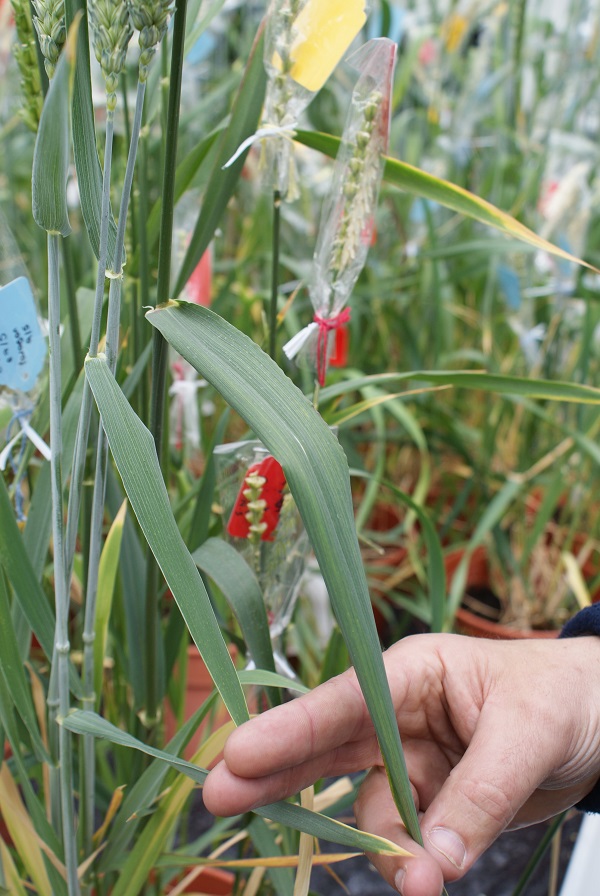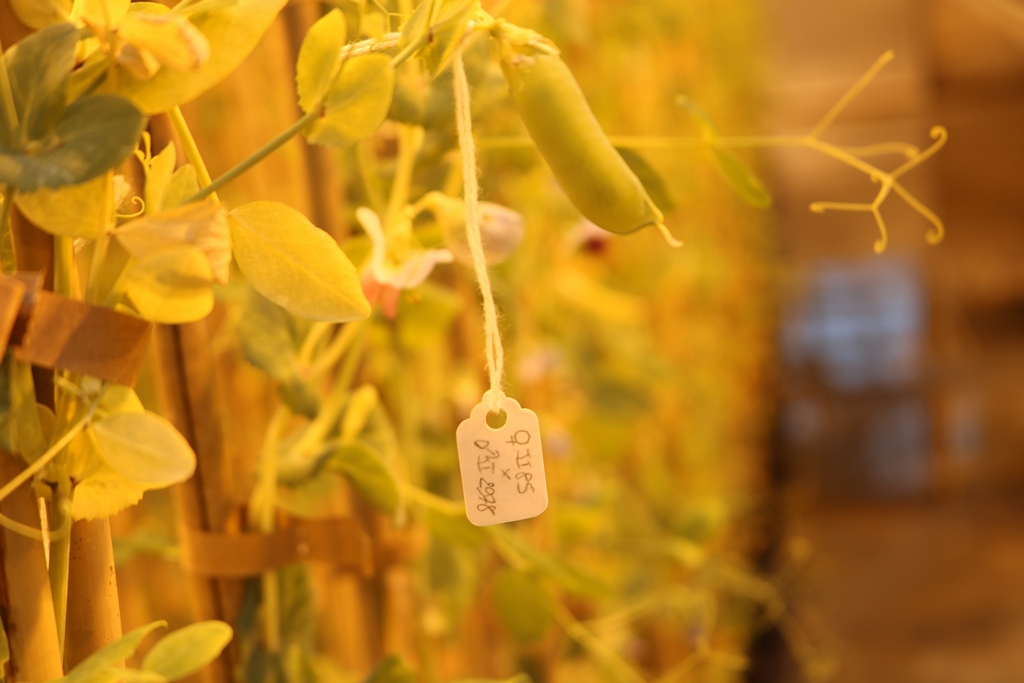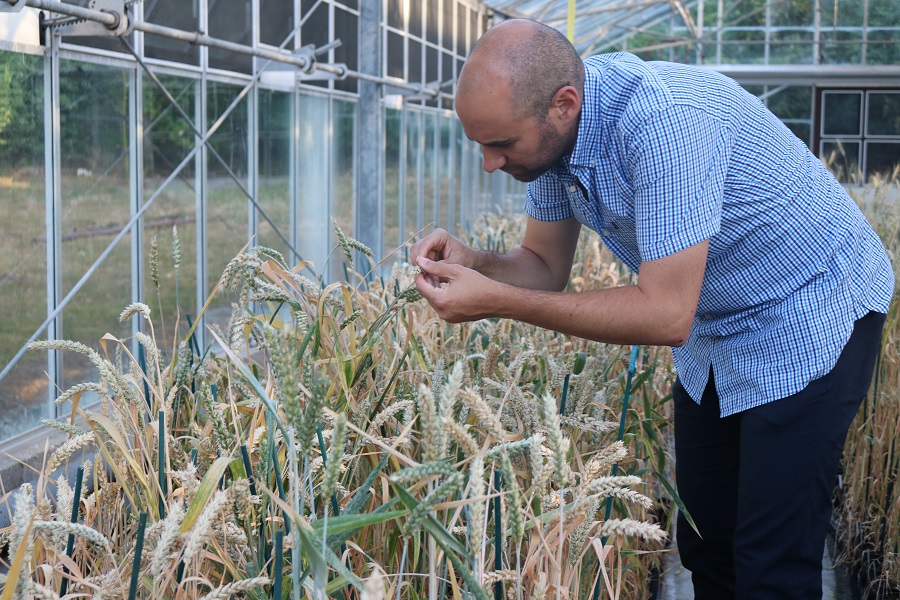Could the UK’s “extraordinary” plant-science sector be limbering up for an integral role in the genetics revolution that will deliver the farming of the future to communities the world over? CPM explores the opportunities.
We see an opportunity for a step change in the way we do plant science.
By Tom Allen-Stevens
As the Government faced criticism for appearing to slam shut one door on the path to prosperity for UK Agriculture, it may just have opened another.
At Cereals Live last month, farming minister Victoria Prentis explained why Government ruled out measures in the Agriculture Bill to prevent farming standards being undermined through imports. But she struck a different note on gene-editing, highlighting that Defra doesn’t agree with EU laws that treat the new plant-breeding technology (NPBT) as genetic modification.
“We’ve pushed for many years for the EU to come to the place we’re in,” she said. “We’re committed to taking a more scientific approach and we recognise the potential for gene-editing to really change our agriculture in the future. We’d like the UK to be a leading player in this space. Whether or not we end up with an amendment to the Agriculture Bill, this is definitely an important area for Defra to be engaging with over the course of the next 12 months.”
This follows the tabling of an amendment to the Agriculture Bill in the House of Lords by former CLA president and Countryside Agency chair Lord Cameron. The amendment on agricultural research would allow the Defra secretary of state to change the way the Environmental Protection Act treats breeding techniques “where nucleic acid changes could have occurred naturally or through traditional breeding methods.” If the amendment’s carried, any changes would only be made following public consultation and would be restricted to England.
Lord Cameron said he wanted the Bill to put forward a “clear message” that the Government will move forward to allow gene-editing in research programmes. “This is a way of speeding up the natural methods of farm breeding to ensure that we can improve the environmental and nutritional outcomes of feeding our ever-expanding human population, both at home and — more particularly, as far as I am concerned — in the developing world,” he told the House during the Bill’s second reading last month.
So just what is the prospect for UK plant-science research and what role could arable farmers have? Moreover, with a US/UK trade agreement being discussed, how will UK plant science fit into the new world order, and what support can we expect from government?
This CPM genetics special explores the prospects for UK-based plant breeding. Since 2003, four Genetic Improvement Networks (GINs) have formed the focus of Defra’s activity in this area, for wheat, oilseeds, pulses and vegetables. The department’s awarded them a total of £5.5M for a five-year programme of activity up to 2023.

WGIN aims to improve the resilience of the UK wheat crop through genetics. For full details see GINs provide shot in the arm
The wheat network, WGIN, for example, has £1.7M of this, with its main aim being to improve the resilience of the UK wheat crop through genetics. About 70% of its effort goes towards trait discovery while the rest is spent on developing genetic and genomic resources, available license-free to commercial breeders to introduce into their elite lines.
One new aspect of the 17-year-old programme is that there’s now an alliance with AHDB to strengthen direct links with farmers. Traits being explored include nitrogen use efficiency, resistance to lodging, slugs and BYDV, as well as resistance to septoria and yellow rust. Work on quality traits includes research on specific weight undertaken at John Innes Centre, for example, with novel lines showing up to 20% improvement.
Drones with high-performance cameras are being developed for faster phenotyping, while one of the jewels in WGIN’s crown is the Watkins collection – a unique set of 1200 lines from 31 countries never previously used in modern breeding. A range of novel traits is also available through 323 lines of Triticum monococcum, a diploid wheat rarely used in modern breeding – resistance to take all, septoria, yellow and brown rust, mildew and aphids have all been identified.
Similar achievements have been made with OREGIN and PCGIN. But is it enough? “We see an opportunity for a step change in the way we do plant science,” says Prof Dale Sanders, director of the John Innes Centre.
“There have been so many interesting developments in the last 10-20 years, particularly around the area of genomics but now with artificial intelligence (AI) being used to understand gene/environment interactions.”
Together with the Sainsbury Laboratory, JIC has launched Healthy Plants, Healthy People, Healthy Planet (HP³). It’s an ambitious vision that sets out to address three critical challenges through the power of plant and microbial science:
- Feeding the world – by sustainably increasing crop yields
- Combatting global health threats – such as antimicrobial resistance and viral pandemics
- Meeting the challenge of climate change – developing crops resilient to environmental fluctuations and requiring inputs that are low carbon.

Collaborative research has long been the backbone of OREGIN. For full details see The OREGIN of resilience?
Picture Tim Scrivener 07850 303986
“The aim of the project is to open up our expertise to the wider commercial and university research centres for collaborations on crops. We want to build the infrastructure that will support a national hub of research expertise.”
The two institutes are seeking a £330M investment, with around 20% sought from non-government sources, to build a new estate at the Norwich Research Park, replacing buildings established in the 1960s. But it’s the nature of the work undertaken that could be truly transformational, says Dale.
“Previously, a lot of plant science research focused on models based on plants that are simple and easy to grow and monitor. It’s now becoming increasingly easy to work on major crops like wheat, and round the country few of our universities have farms on which they carry out trials to establish how crops grow in the field.”
And this element is key. “We’re very good at cultivating plants under controlled conditions in the lab. But to understand plant development you have to put them outside in field trials, and it’s the research farms that offer this resource.”
But current regulations, inherited from the EU, restrict that essential step for material developed through gene-editing. Dale points out the technology provides a very efficient pathway of inducing genetic variation in plants, cutting down the time taken to introduce a new trait from 10-20 years to less than five.
“This is a targeted, quick method of introducing natural variation that doesn’t involve transferring genes from one species to another nor do you get the random changes induced through forms of mutagenesis not currently regulated as GM,” he maintains.
“The regulations don’t stop us doing the research, but they do prevent commercial development. It means we can’t put them out into the field and into a form that is societally and commercially useful.
“But it’s not really about the technology itself. Ask what you want to do with it – what is the change you want to induce? You can do terrible things with all forms of breeding, but you can also do great things, and that is the vision for HP³.”

PCGIN provides the investment in genetic solutions the industry increasingly relies on. For full details see Reach for the GIN
Whether GM or not, what will be the market for this revolution in plant breeding? Much depends on the outcome of trade negotiations currently underway, but those who support the move to diverge regulation from the EU on gene-editing to accelerate research say field trials wouldn’t affect EU/UK trade agreements.
That’s because any novel material currently in UK research programmes is still many years from commercial adoption and governed by robust existing legislation for bringing new varieties to market that keep any material out of the food chain. Trials would be a consideration purely for national legislation, following Brexit, and that’s now governed by Defra as a release to the environment.
But a more favourable scientific platform for developing NPBTs could be viewed as a positive in any future US trade deal. The USDA has recently launched its Agriculture Innovation Agenda that seeks to raise US agricultural production by 40% while cutting its environmental footprint in half by 2050.
Bill Hohenstein is director of energy and environmental policy in the office of the chief economist of the USDA and talked exclusively to CPM about the USDA’s new vision for innovation in farming.
“The production side is not new for us – a 40% rise is in line with the innovation US agriculture has always adopted and that’s fed a growing population within the same environmental footprint. The interesting element of this initiative is to elevate the environmental and sustainability side,” he maintains.
“We’ve broken it out into three parts. There’s an R&D side focused on efforts to improve productivity, quality, soil health and greenhouse gas (GHG) profile. The second part is what we’re calling programme integration – there are a lot of technologies out there that aren’t being widely adopted or understood. We can do a much better job of enhancing the environment simply by promoting and implementing latest practice.
“The third part is data collection and reporting – innovative ways to help us monitor where we are and where we need to go, whether we’re on track to reach our goals.”
New technologies will deliver a data and evidence-driven approach that will in itself drive efficiencies, increase uptake of transformative technologies and raise consumer awareness of farming’s green credentials, Bill explains. But NPBTs will form a key part of the new Agenda. A report on Science Breakthroughs to Advance Food and Agricultural Research by 2030, published in 2019, has fed into the USDA’s vision.
This has identified genomics and precision breeding among five “breakthrough opportunities” that could “dramatically increase” the capabilities of food and agricultural science for the US. “The ability to carry out routine gene editing of agriculturally important organisms will allow for precise and rapid improvement of traits important for productivity and quality,” says the report.
But the US is looking beyond its own shores as a market for its agricultural technologies, notes Bill. “We certainly think there’s a lot to be said for the US model of agriculture in how it generates multiple benefits that have applications globally. So we will be expecting that when we’re developing these technologies, they won’t just be applied in the US.
“In places like Africa and Latin America there’s potential to improve both productivity and environmental performance. Our view is that by sustainably intensifying production and by employing these latest technologies and practices we can produce more from the same amount of land – that’s been the experience in the US and the lesson we’re most interested in sharing globally. It certainly has applications in Europe and the UK, but there are much broader applications where you’ll see more rapid changes in agriculture over the next 30 years.”
The UK and US can be effective partners in the research to meet this goal, he says. “There’s a broad suite of technologies out there that will enhance production and improve efficiencies, including soil health and conservation practices, advanced manure management systems, and information and data management technologies. NPBTs also have a role. Consistent messages and strong voices from the UK as well as US on the benefits of sustainable agriculture including areas where we can work together would be really helpful.”
Dale Sanders is clear on where the opportunities lie for JIC. “It’s particularly in the area of wheat. Maize is the major cereal for the US. But we are a global centre for wheat where we can apply genomic approaches, building on that natural variation we’ve collected.”
As a sign of what could be to come, JIC, along with University of Minnesota and Kansas State University, has recently been chosen to work on a study of wild emmer wheat to discover genes that can help farmers around the world combat rust. The $650,000 award was made by USDA to US-based charity 2Blades Foundation.
“They’re targeting the work carried out by Dr Brande Wulff at JIC,” explains Dale. “He has developed an extremely effective bioinformatics pipeline, which enables the identification of resistance genes. It’s more advanced than any work done in this field anywhere internationally.”
And more broadly, what makes the UK plant-science sector unique is the investment in fundamental, rather than just translational research, he says. “Many countries have picked the low-hanging fruit of what you can immediately commercialise. But it’s through gaining that basic understanding of how biological systems work that enables you to make big, step-change advances.
“It’s a willingness by really bright people that has enabled this – people who are prepared to ask questions about the fundamentals of plant science. It’s a heritage we have here in the UK and goes right back to the discovery of the DNA Double Helix in the early 1950s.”
There are opportunities, too, for on-farm collaboration to help develop the genetics of the future. “Our traditional first port of call for collaboration has been with the breeders, but direct interaction with farmers is something that we value and has expanded hugely over the past 10 years,” notes Dale.
“At the moment we do trials on quite small plots. But scaling up is where you can begin to answer some of the critical questions about how novel material will behave. It’s one of the most difficult aspects of innovation, but it moves you from proof of concept to proof that you can actually do it – that is the value that large-scale field trials on farms could offer.”
Initiatives such as Innovative Farmers, ADAS’ Farmer Innovation Groups, underpinned with Agronomics, and Rothamsted Research’s FarmInn programme literally lead the field in this area. They bring scientists directly onto farm to rigorously test new ideas with farmers in a way that’s scientifically robust and aims to de-risk the process of trying innovative practices.
Now they’re the focus of the Defra-led Agri-Innovation R&D Package. Ben Rayner from Defra’s Food Chain Innovation Team notes that productivity in the UK has not kept pace with competitors overseas. “Investment in agricultural R&D is the best driver for productivity,” he says.
But currently less than 1% of public funds spent on agriculture goes into farmer-led research. “We’ve worked with farmers and industry to develop the new R&D package,” continues Ben. “One of its three strands is around accelerating adoption of new technologies by sharing the financial risk of trials and actively engaging farmers. This is about small-scale short-term farmer-led research projects bringing farmers together to investigate novel ideas.
“But it’s not only about doing the research. It’s also about accelerating the learning. The more we involve farmers in the research, the more likely they are to spread the knowledge to other farmers and encourage uptake of new practices and technologies,” notes Ben. The Agri-Innovation R&D Package is due to launch in 2022.




